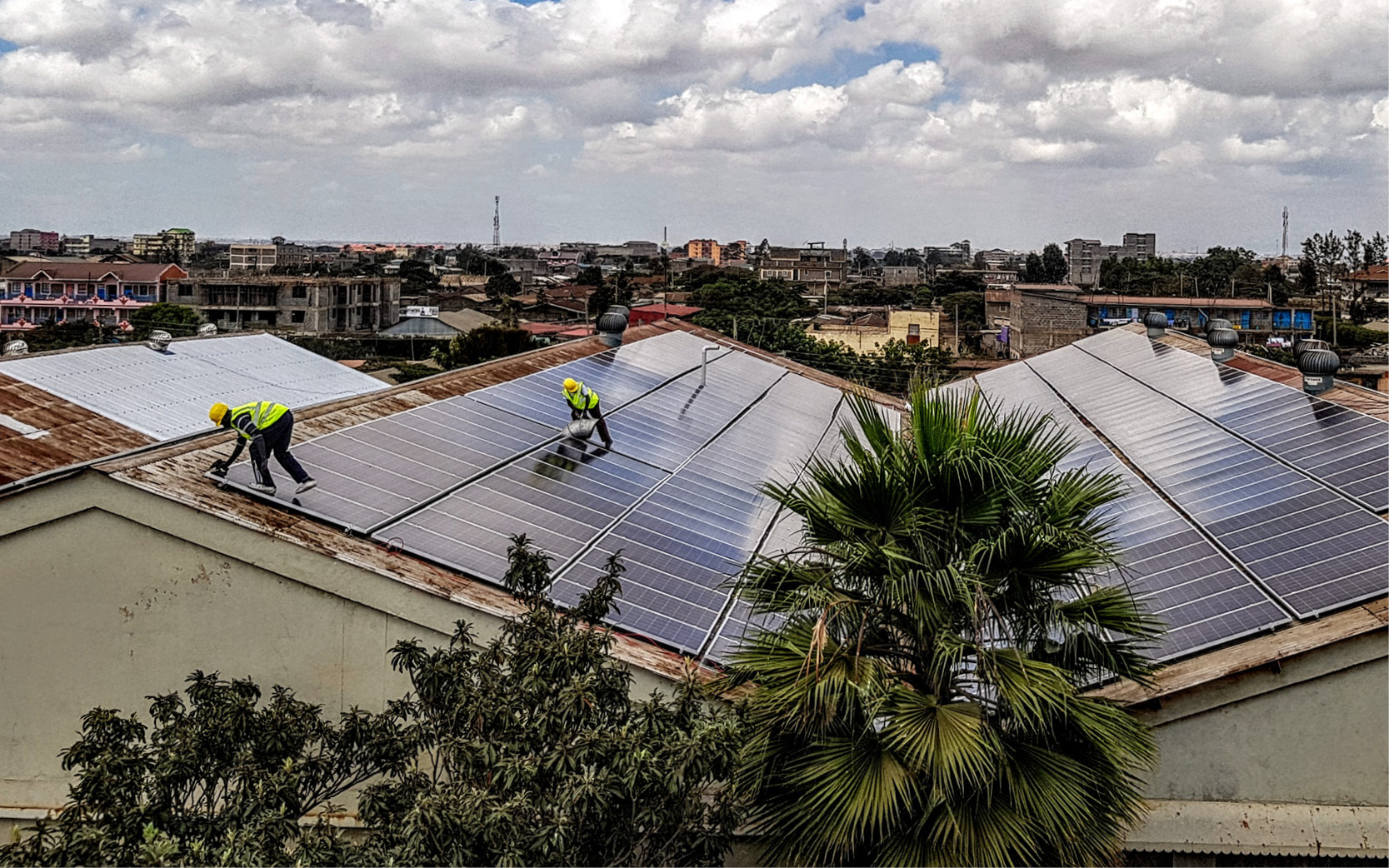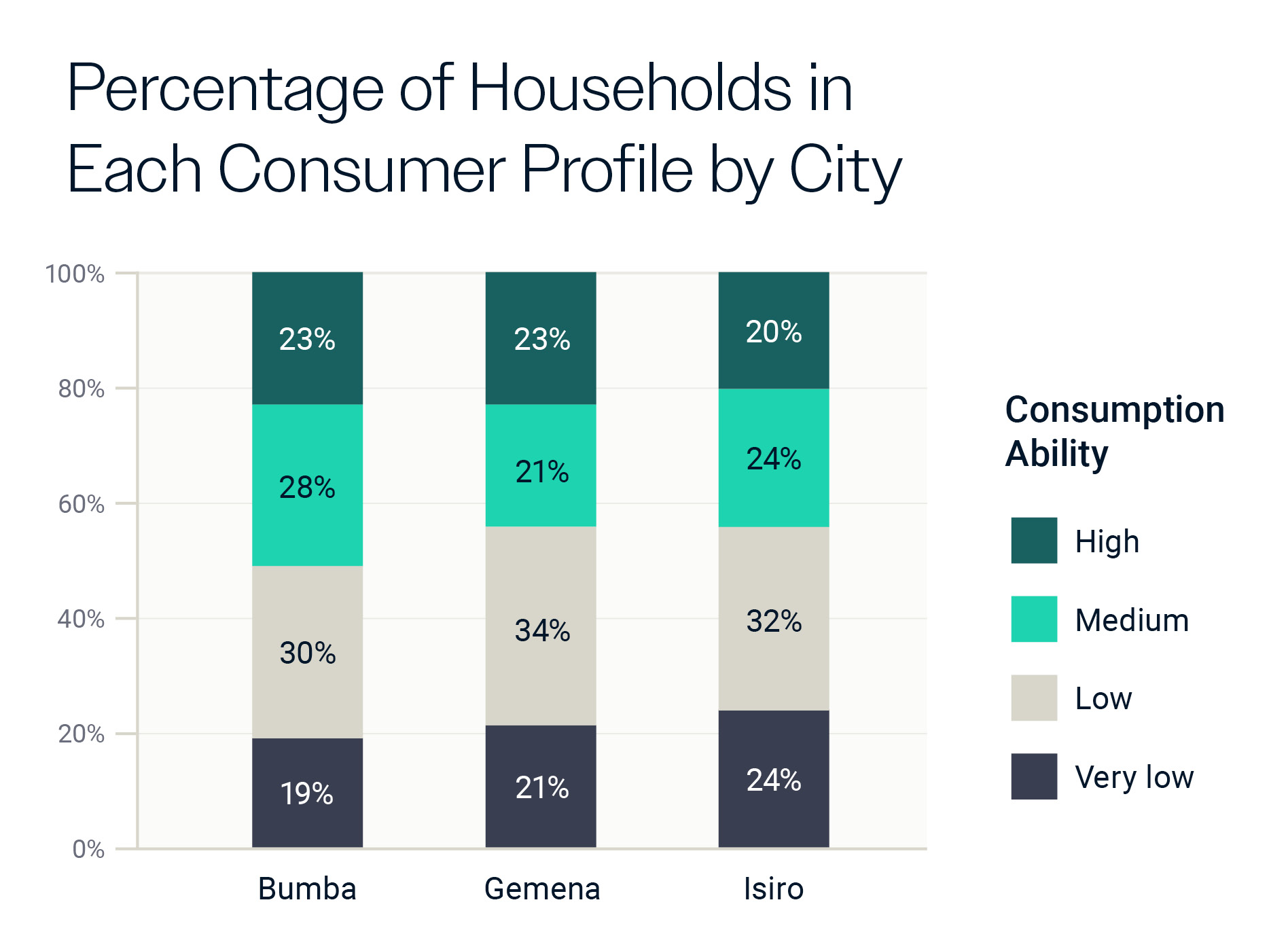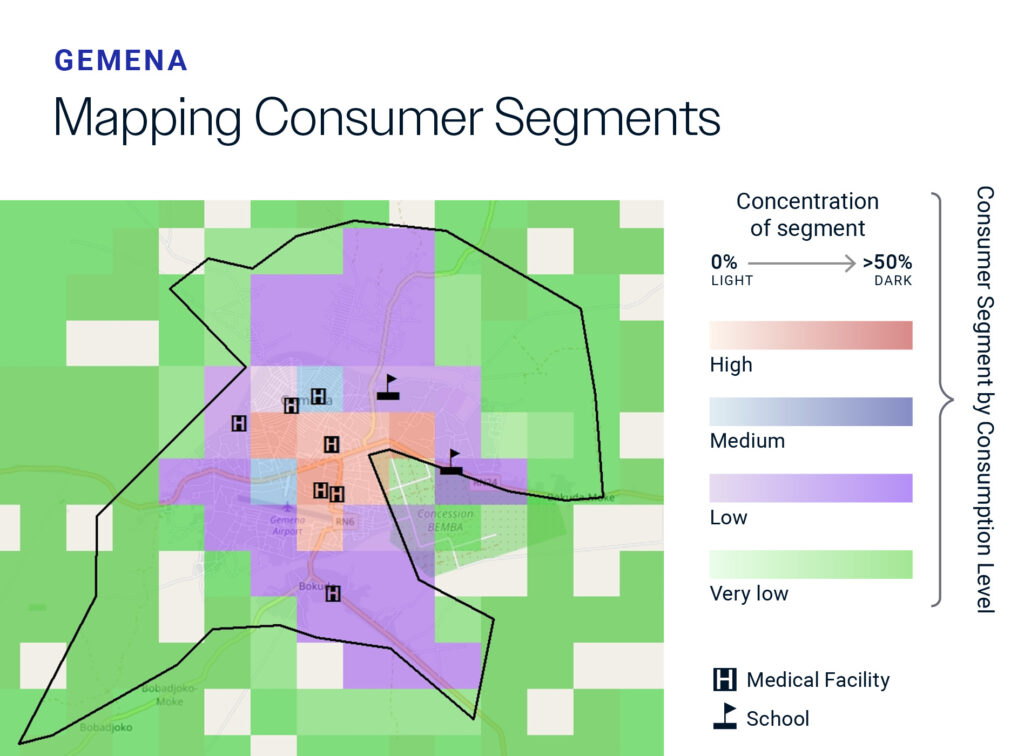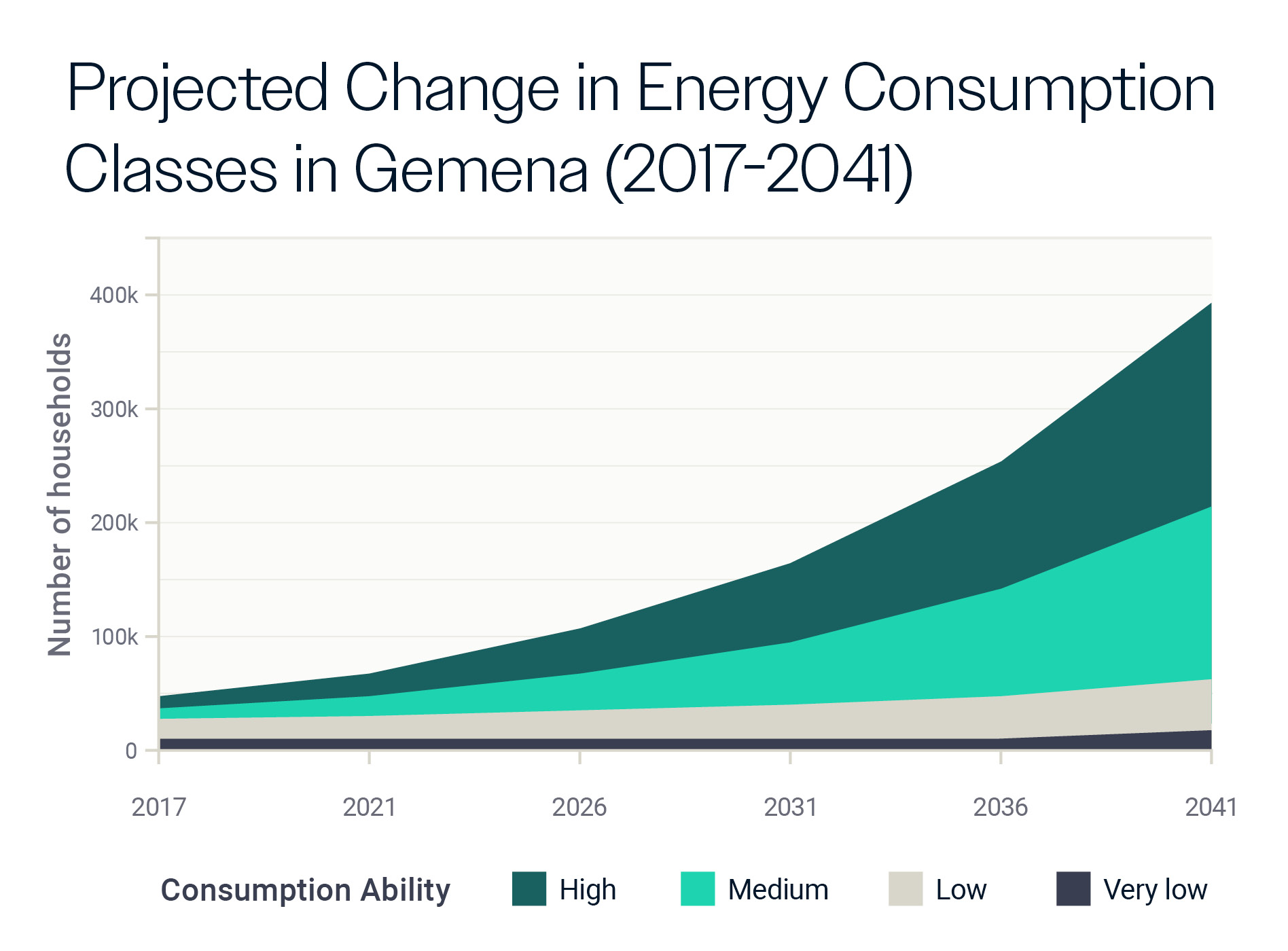Fraym Partners with SEforAll to Support Energy Access in Nigeria

In 2019, Fraym assisted Eranove, a pan-African industrial company, in assessing the market for mini-grid expansion in three cities in the Democratic Republic of the Congo (DRC): Bumba, Gemena, and Isiro — leading to a 22-year concession agreement to build solar mini-grids.
Eranove relied on Fraym’s granular insights on market demand, ability to pay, and market growth potential to supplement its own analysis of the power market in a construction bid to the government of DRC.
Consumer Segmentation
To begin, Fraym divided off-grid households in Bumba, Gemena, and Isiro into four mutually exclusive consumer classes. Among the three cities of interest, an estimated 96 percent of households did not have access to electricity. Households in the “High” consumer class owned at least one high end appliance such as a car, laptop, refrigerator, or television. Households in the “Medium” class owned mobile phones and used high quality building materials for at least one of their roofs, floors, or walls such as stone, cement, steel, or bricks. “Low” households either owned a mobile phone or a radio. Finally, “Very low” households did not own any high or mid-range assets and used lower quality housing materials such as mud, reeds, and thatch. All three cities showed a similar distribution of households between the four consumption classes as well as similar spatial distribution with higher consuming households concentrated in city centers.
Electricity Demand
Next, Fraym estimated electricity demand within each consumer class by city of interest. This measure represents how much energy each city would use if provided access to electricity. To estimate electricity demand, Fraym used a comparison group of on-grid households within each consumer class to predict electrified asset ownership and use in a scenario with full access to electricity. For example, in the high consumption comparison group, 97 percent of households owned mobile phones, and, on average, mobile phones were used for an estimated 6 hours per day based on media consumption indicators. Using data on the number of households and an estimate of the power demanded by mobile phones (10 W), Fraym estimated that in Bumba high consumption households would demand 211,192 kWh of electricity from mobile phones alone. This exercise was repeated for each electrified asset in each city in each consumer class to arrive at total demand estimates by city and consumer class profile.
Fittingly, high consumption households made up 66-81 percent of total estimated annual demand in the cities of interest. As other consumer classes’ energy use stemmed from low power assets such as lighting, mobile phone chargers, and radios, they contributed relatively little to total demand.
Demand Projection
Finally, to estimate market potential, Fraym projected the number of households that would make up each consumption class in each city from 2017 until 2041. First, Fraym calculated a five-year population growth rate to be used in the linear projection of population growth in each city. Fraym derived this growth rate by scaling the population growth in the seven-year period from 2007 to 2014. Next, Fraym evaluated the changes in the composition of consumption classes in each city from 2007 to 2014. These changes in distribution were assumed to continue during the period of projection. Namely, Fraym assumed the proportion of very low and low consumption class groups would continue to decline while the medium and high consumption ability groups would increase. Fraym also assumed the households that currently have access to electricity through solar panels and generators would become part of the high consumption ability group. Using these historical trends and assumptions, Fraym charted the development of household power demand in each city in five-year increments from 2017 to 2041.



New data on the percentage of households in each consumer profile by city – Bumba, Gemena, and Isiro.
Here we map consumer segments at the hyperlocal level in Gemena.
This chart projects change in energy consumption from 2017 to 2041 for Gemena.
%
don’t have electricity access
M kWh
annual electricity demand
%
growth in high consuming class by 2041
*Stats above are for Bumba, Gemena, and Isiro combined
Using Fraym’s granular data on consumer classes, electricity demand, and market growth potential, Eranove strengthened its understanding of the mini-grid market in Bumba, Gemena, and Isiro leading to a 22-year concession agreement to build solar mini-grids in the three cities of interest signed in June of 2021.